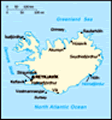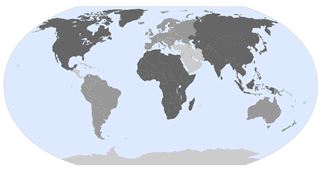Advertisement
Published: August 20th 2018
The highlands of Iceland have very little development and it is difficult to travel around. A great place, therefore, to get away a little from the outcome of the success Iceland has had in attracting tourists. This post will deal with the trip into Askja, the caldera itself and the next post will pick up the side trip out to Holuhraun eruption of 2014 and our trip out to the coast.
Our previous post set out our reasons for selecting the F910 option from those available so I will only talk about those other options here in passing.
We camped Modrudalur on the 901 that comes off Highway 1, the Ring Road, 26 km after it crosses the Jokulsa-a-Follum. Modrudalur has a bar and restaurant along with cabin accommodation. Importantly for us, it also has fuel. There is a good sized camping area.
We have learnt that it makes sense to check out camping areas here. Most are similar but most also have little quirks. Bathrooms might, for instance be 'family' meaning that you have the toilet shower and a basin in the same room. One we came across had 2 shower heads in the same large cubicle.
Some have washing machines and some also have driers. Most have a camp kitchen.
On our recce of this campsite we found the laundry which was well and truly in use by the time we arrived. We also found the camp kitchen. Both of these facilities were in turf and rock shelters, separate ones and well constructed. We went into the kitchen and were checking out what was available when another lady came in had a quick look around and left. As she did so she shut the door to keep the cold out a little. Helpful.
Until we decided to leave and found the door firmly locked - from the outside. It had one of those springloaded bolts that snapped firmly into place. It is a big campsite and people are spread out. It was still relatively early in the evening so not too many people around. We hammered, yelled and searched for openings. A white cat found its way in but there was no way we could get out. Eventually, after what felt like a long time a woman approached. We thought she must have heard us. But no, she thought she was headed for the
toilet. When she heard the voices she stopped and turned away. Luckily, some more insistent cries brought her over to release the door.
Most of the people camped here were either on their way down to Askja or on their way back. Vehicles ranged from big serious rigs with wide wheels and tyres fitted with inbuilt air compressor set-ups to Dacia Dusters and Subaru Foresters.
Adopting our normal practice of asking locals, we spoke to the bloke taking money for camping. The question was a little open and his immediate response was to tell us that the water in two of the creeks was quite high, measuring up to high on his thigh. Otherwise, we would be able to get there in our relatively small 4WD. He didn't follow up with a quote on a bus tour on their bus or a helicopter flight but there were big signs all over the place and it seemed reasonable to consider any conflicts of interest he might have.
Although we didn't have a snorkel, I was pretty sure that we could get through a creek, even if it was up that high, except that the hire company was quite
insistent that we shouldn't go through water higher than the hubs. I guess that would ensure that it wouldn't be able to get inside the vehicle.
We determined that we would drive down and have a look. If it was too high then we would turn back. When we asked the lady who sold us fuel in the morning about the road conditions, she looked at us and our vehicle and said that some of the smaller ones vehicles would have trouble but we would be fine.
Down the F905 for 20 kms and then on to the F910. The first ford was running well and was pretty wide. It looked like there was a bit of a hole in the middle. A lady from another vehicle had just walked it and it wasn't that deep. We watched the other vehicle take it successfuly and so we followed, staying on the downstream side and working up. It wasn't running fast enough to wash us off and there were large-ish rocks that would stop us if we did go. The next one was shallower. Luckily, there were bridges over the Kreppa River and Jokulsa-a-Follum.
There was a need
for a fair bit of rock hopping, some of it interesting but nothing to stop anyone. There were also some patches of black sand but, again, as long as people kept moving they were OK. Dacia Dusters were doing it without apparent problems as were some Kias and Subaru Foresters.
A ranger met us on the road in, gave us a better map and told us about a ranger tour that would leave from the Askja car park in an hour or so and another that would be held the next day on a new lava field 19 km away. These talks take place most reasonable days during the summer.
It took us a while to get from Drekagil - where the campsites and offices are - through the lava field up to the car park at Askja. The car park was packed with cars, 4WD tour buses and a reasonable number of people milling around. We didn't have high hopes of the walk and talk. It looked as if there would be so many people that it would be hard to hear. Our good fortune turned out to be bad for others. There were just 20 for
the free ranger walk and talk. Eighteen Italians from an Adventure Tour and us. These mobs of other assorted tourists clearly didn't know the golden rule of visiting national parks world wide - never miss a ranger walk and talk unless you are incapacitated.
I won't try to channel the ranger or any of the information that we have read. If you are interested you will find any amount of good information on the appropriate web sites. I will, however, offer a taste of what this place is all about.
The first thing to mention is that the ranger, a bloke named Siggi if we picked it up correctly, was an Icelander who was born and brought up on the family farm next door to the National Park, just 60km away. He met us at the gathering point with a small plastic bag of rubbish, pointing out that this was a morning's take in the parking area. He used it to make the point that rubbish here doesn't degrade and even the organic material, like banana skins, doesn't rot down. It is cold and dry and they just stay. Everything just stays.
Walking through the caldera, there
is a feeling of stillness that is close to eerie, even with a line of tourists chatting. There are no birds, very few insects and no other animals. In some areas lichen is starting to attach itself to some rocks. We spotted, outside the caldera, what appeared to be some random pasture grass. Just a tuft, probably brought in on a tourist boot.
I should also mention that this was the major day of our camera collapse and we lost 300 photos. The ones on this blog will, therefore, be the ones I took with my phone. We hadn't realised that the camera was stuffed so I took my normal approach to photography, point and click all the while waving the phone around like a flag - or so I am told.
It was a good day for photos. Four days before there was a snow fall here and you will see some of the snow remains. There was 150mm of snow in the car park, so not an insignificant fall. Before the summer snow, the whole area was shades of brown so, though there was not a lot left, it made for a nice contrast occasionally. And
we learnt how to walk in snow again!
Siggi took us to the site of the last eruption of Askja, a place about 25 metres up the side of the caldera. I can't remember the numbers but I think the 1961 eruption started many metres below the ground level. It moved under the ground and came out through a fissure in the side of the large caldera that had been caused by the previous eruptions.
In fact, Askja is a caldera (or pot), inside a caldera, inside a caldera. This (or I suppose it should be 'these') caldera are in the Dyngjufjoll mountains. These mountains were formed mainly during the Ice Age. To cut a long story very short, for 10 000 years there were frequent eruptions in the range. In January 1875 about 2.5 cubic km of loose material erupted in the south-eastern part of the caldera and the explosion crater Viti was formed. During this eruption the magma chamber under the south-eastern corner of the main caldera was suddenly emptied and its roof fell in creating Lake Oskjuvatn, 11 square kilometres in area and about 220m deep.
It was a 2.5 km walk from the
lip of the caldera to the two lakes which are separate and remain so. Viti maintains a temperature of about 22 degrees C and people swim there. The larger lake is cold and people don't swim there.
As we walked along the marked path in the caldera, Siggi pointed out sites of other, smaller eruptions that had occurred around the caldera. When the 1875 eruption took place the caldera had, as I recall being told, 85 metres of ice covering it. Clearly, some of that ice would have been melted by the lava but much of it remains under the ice. As it melts the ground subsides. In some areas there is as little as 300mm of soil between feet and the old ice. The ground in some places where it hasn't subsided has a drummy sound to it, just like a dodgy tiling job.
Different coloured scoria was also pointed out. The black was from the 1875 eruption and the red from the 1961 eruption - or was that the other way round. Anyway, the difference between red and black is one atom of iron.
We camped at Drekagil that night, planning a little drive out
to the site of the lava beds of the Holuhraun Eruption the next day.
Advertisement
Tot: 0.488s; Tpl: 0.015s; cc: 37; qc: 140; dbt: 0.2042s; 1; m:domysql w:travelblog (10.17.0.13); sld: 2;
; mem: 1.6mb




















D MJ Binkley
Dave and Merry Jo Binkley
Camp ground facilities
I've read a lot of blogs on Iceland but you are the first to comment on the varied facilities. The options do sound quirky. OMG... so glad you got out of the trap door. Yikes! My heart sank when I heard you lost 300 precious photos. MJ